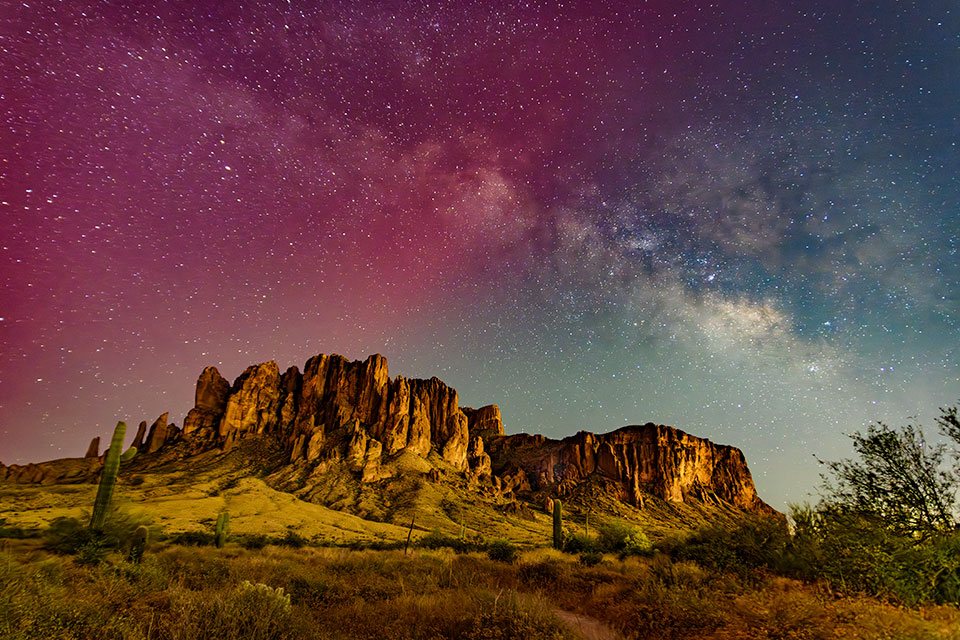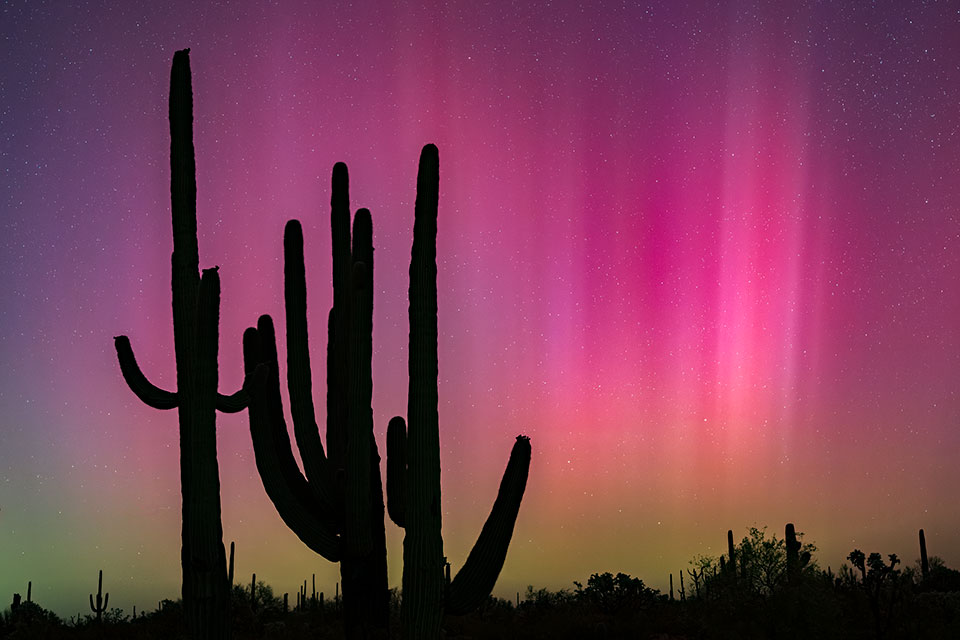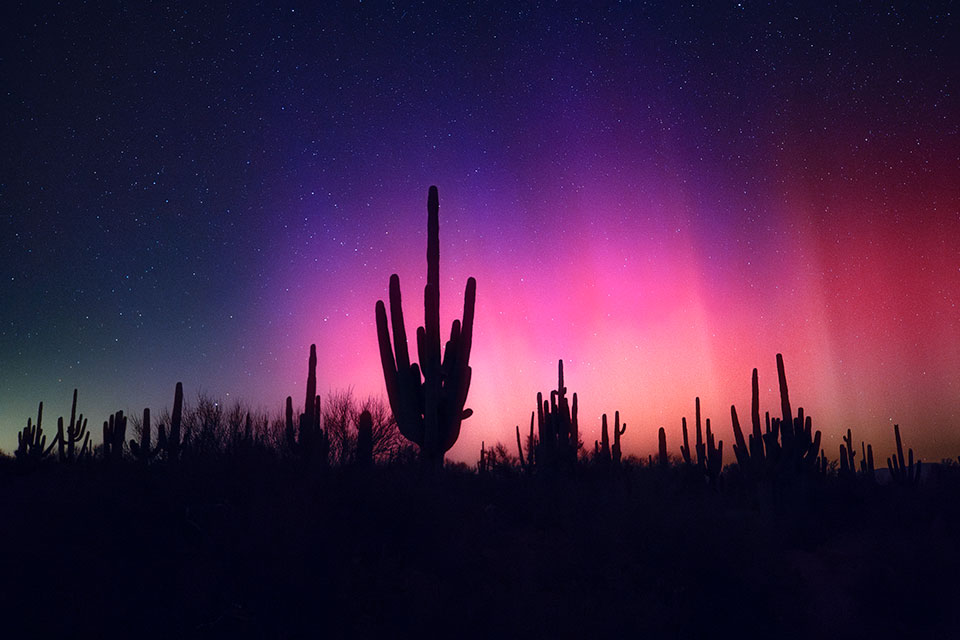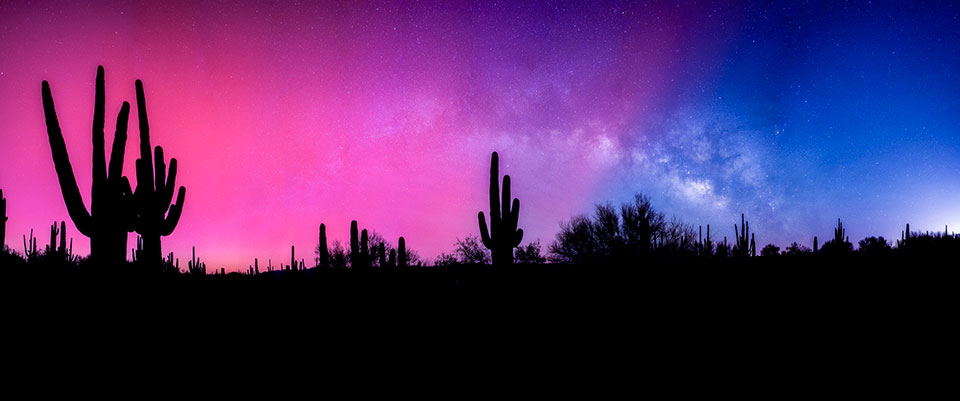Editor’s Note: On the evening of May 10, at 3:54 p.m. Arizona time, the National Weather Service observed conditions resulting from an extreme geomagnetic storm in outer space, in which electrons from space began flowing down Earth’s magnetic field, where they eventually collided with atoms and molecules in our upper atmosphere. Those collisions produced an aurora (streamers or arches of light) known as the northern lights — the scientific term is aurora borealis. (In the Southern Hemisphere, the southern lights are known as aurora australis.) The geomagnetic storm that night reached a level of G5, or 5 out of 5 in intensity. The last time a solar storm of that magnitude reached Earth, and subsequently Arizona, was on Halloween in 2003. Lucky for us, several of our regular photographers, along with a few others who tagged us on Instagram, had their cameras, light meters and tripods sitting by their front doors.

At around 1 a.m., Sue Wright captured the Milky Way rising over the Superstition Mountains, east of Phoenix, amid the aurora’s pink and purple hues. “What a special night,” she wrote on Instagram. “This is a once-in-a-lifetime type of event.”
Sue Wright
NIKON D850, 13 SEC, F/2.8, ISO 1000, 24 MM LENS

Jack Dykinga has experience photographing the northern lights in areas where they more commonly occur, so he knew where and when to shoot on the night of May 10. He made this photo, along with our front cover image, around midnight on Bureau of Land Management land northwest of Tucson.
Jack Dykinga
SONY ALPHA 1, 10 SEC, F/4, ISO 2000, 50 MM LENS

Sean Parker happened to be leading a Milky Way photography workshop near San Manuel, northeast of Tucson, the night the aurora borealis appeared in Arizona. He made this photo at about 1 a.m.
Sean Parker
PANASONIC LUMIX S5, 2.5 SEC, F/2.8, ISO 12800, 30 MM LENS

In another of Parker’s photos from the San Manuel area, this one made around 2:30 a.m., saguaros and other desert plants anchor an expansive view of the aurora. Parker wrote on Instagram that he and his workshop group watched the show from 8 p.m. to 3 a.m.
Sean Parker
PANASONIC LUMIX S5, 10 SEC, F/2.8, ISO 8000, 21 MM LENS

